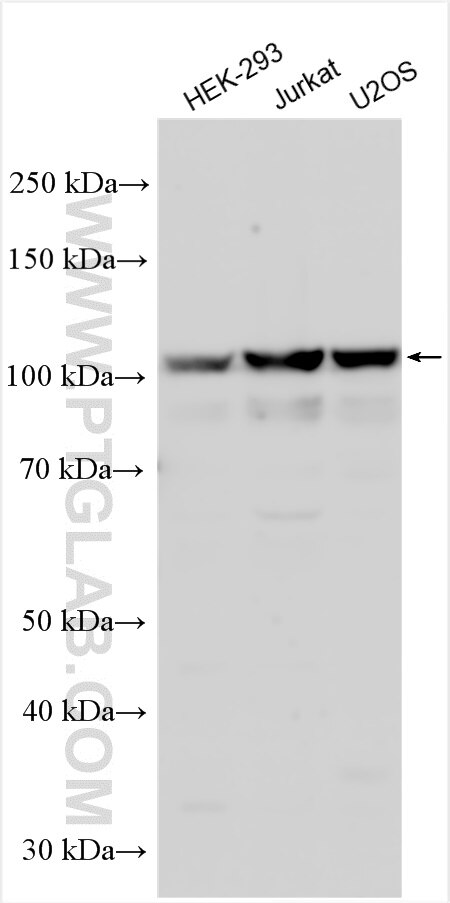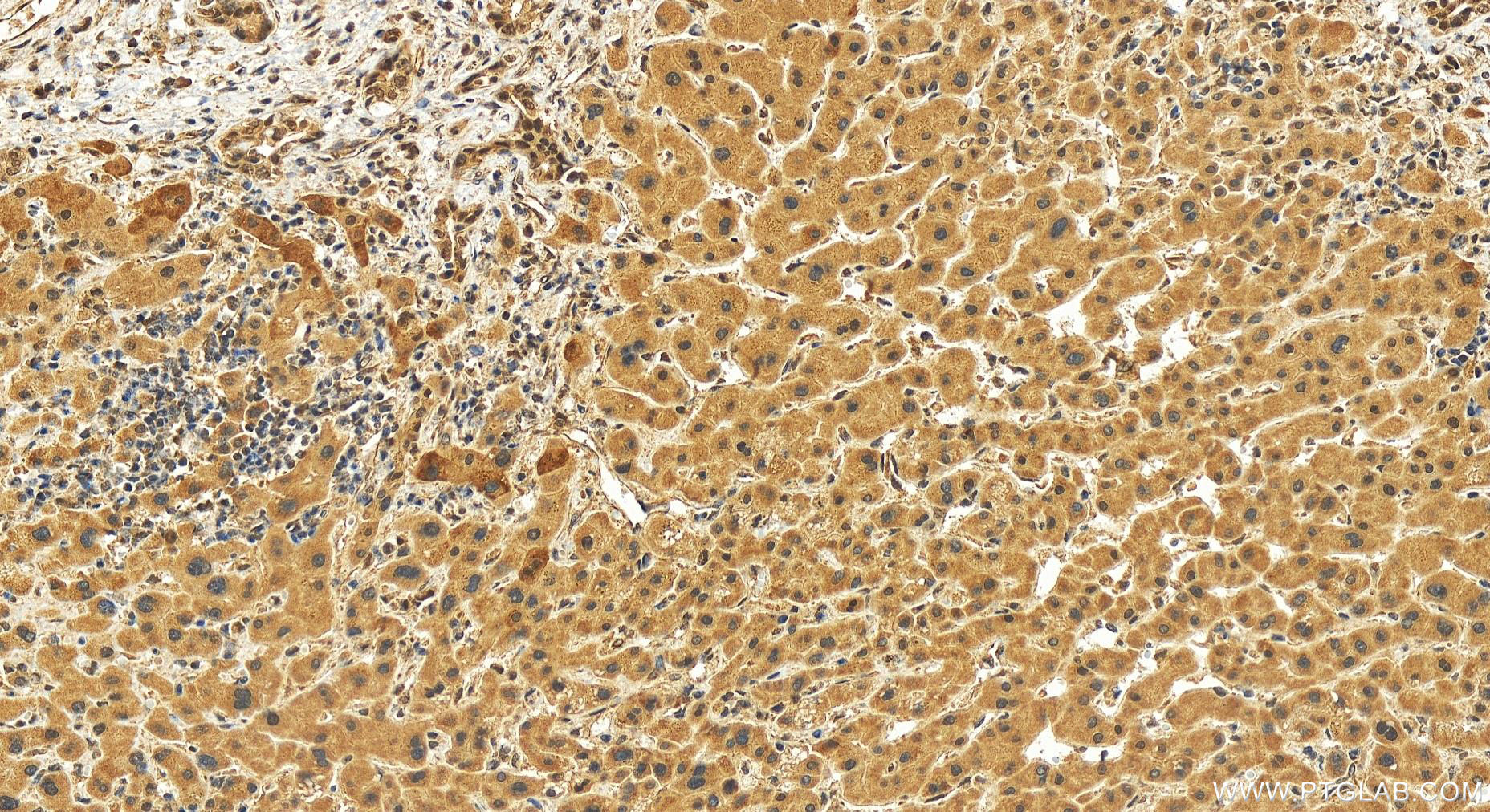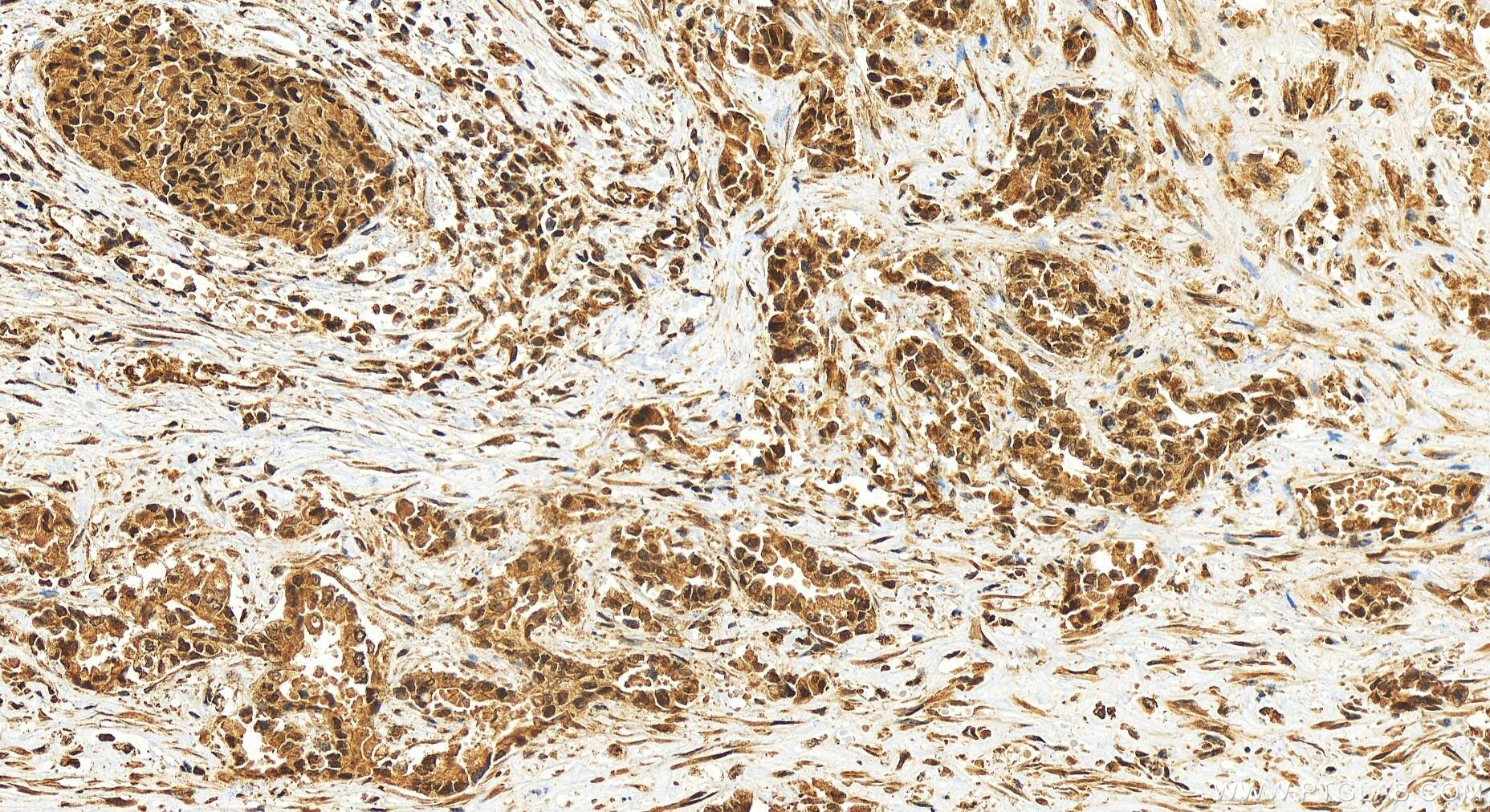Tested Applications
| Positive WB detected in | HEK-293 cells, Jurkat cells, U2OS cells |
| Positive IHC detected in | human intrahepatic cholangiocarcinoma tissue Note: suggested antigen retrieval with TE buffer pH 9.0; (*) Alternatively, antigen retrieval may be performed with citrate buffer pH 6.0 |
Recommended dilution
| Application | Dilution |
|---|---|
| Western Blot (WB) | WB : 1:1000-1:5000 |
| Immunohistochemistry (IHC) | IHC : 1:50-1:500 |
| It is recommended that this reagent should be titrated in each testing system to obtain optimal results. | |
| Sample-dependent, Check data in validation data gallery. | |
Product Information
25533-1-AP targets KANSL3 in WB, IHC, ELISA applications and shows reactivity with human samples.
| Tested Reactivity | human |
| Host / Isotype | Rabbit / IgG |
| Class | Polyclonal |
| Type | Antibody |
| Immunogen | KANSL3 fusion protein Ag22117 Predict reactive species |
| Full Name | KIAA1310 |
| Calculated Molecular Weight | 878 aa, 93 kDa |
| Observed Molecular Weight | 105 kDa |
| GenBank Accession Number | BC063792 |
| Gene Symbol | KANSL3 |
| Gene ID (NCBI) | 55683 |
| RRID | AB_3085802 |
| Conjugate | Unconjugated |
| Form | Liquid |
| Purification Method | Antigen affinity purification |
| UNIPROT ID | Q9P2N6 |
| Storage Buffer | PBS with 0.02% sodium azide and 50% glycerol , pH 7.3 |
| Storage Conditions | Store at -20°C. Stable for one year after shipment. Aliquoting is unnecessary for -20oC storage. 20ul sizes contain 0.1% BSA. |
Background Information
KANSL3, or KAT8-associated nonspecific lethal complex subunit 3, is a component of the KANSL complex, which is an important chromatin modifier in higher animals. This complex plays a crucial role in regulating housekeeping genes and is highly conserved across species. KANSL3, along with other KANSL complex members, is essential for cell division and has been shown to interact robustly both in vitro and in vivo. KANSL3 has been found to have a dual role in cellular function. In interphase, KANSL3 is chromatin-bound and regulates the expression of housekeeping genes. During mitosis, KANSL3 relocates to the mitotic spindle and is important for cell division. It has been identified as a microtubule minus-end-binding protein, which is a novel function for a chromatin-binding complex. KANSL3's ability to bind directly to microtubule minus ends is significant, as very few proteins are known to perform this function.
Protocols
| Product Specific Protocols | |
|---|---|
| WB protocol for KANSL3 antibody 25533-1-AP | Download protocol |
| IHC protocol for KANSL3 antibody 25533-1-AP | Download protocol |
| Standard Protocols | |
|---|---|
| Click here to view our Standard Protocols |







